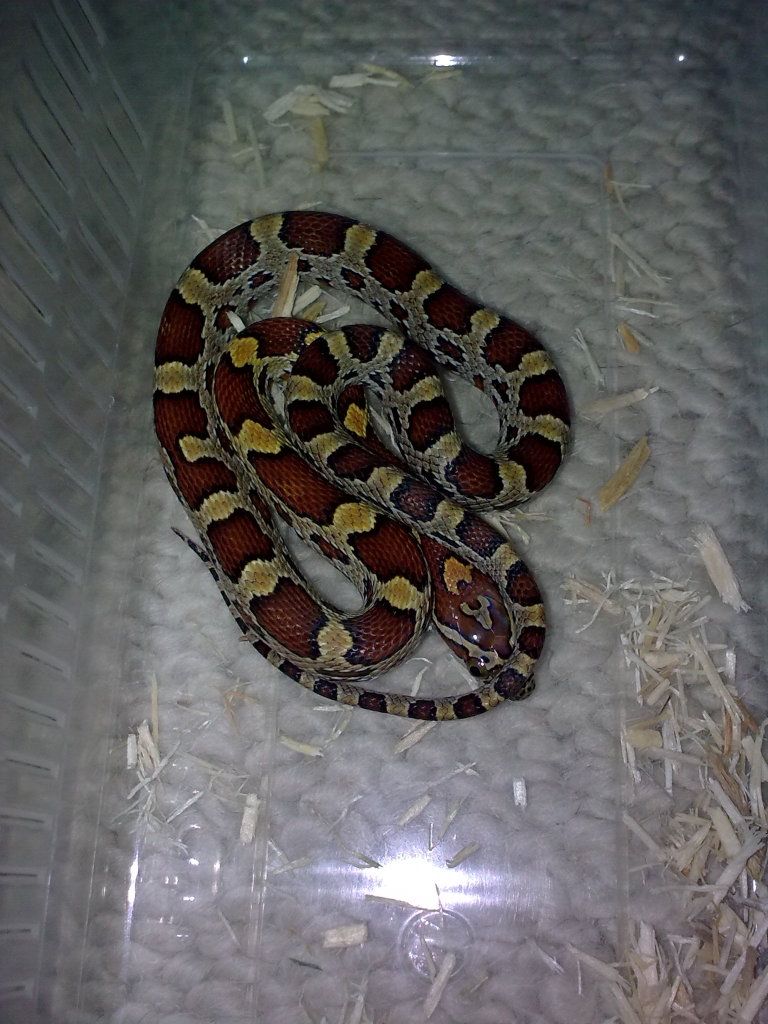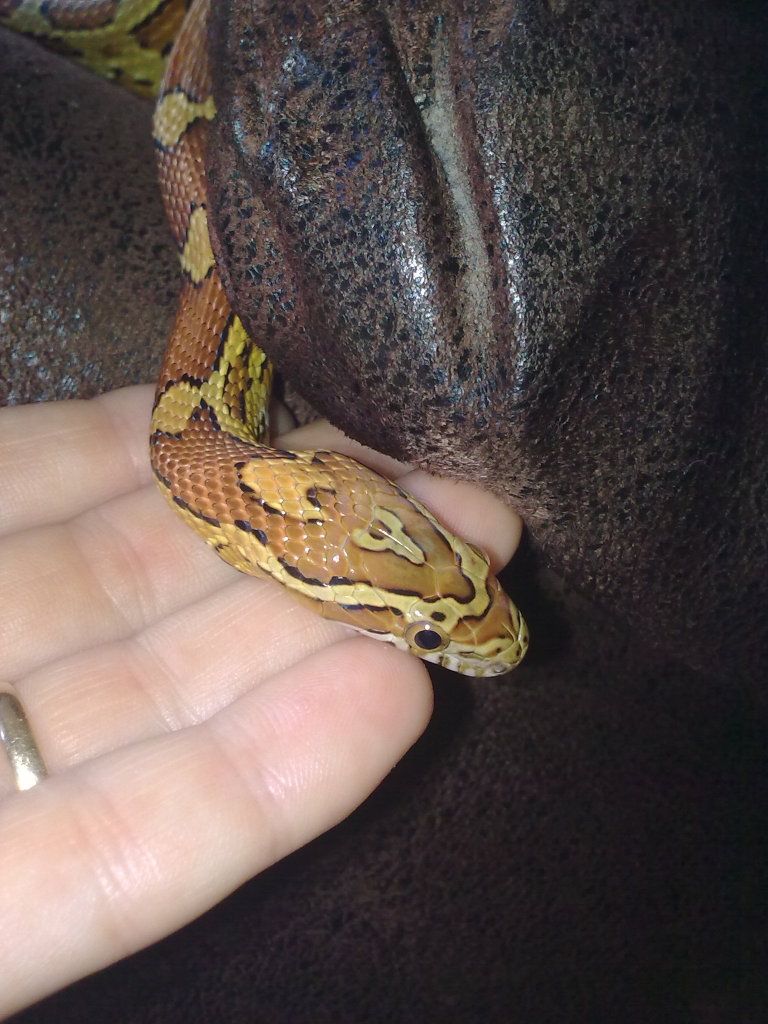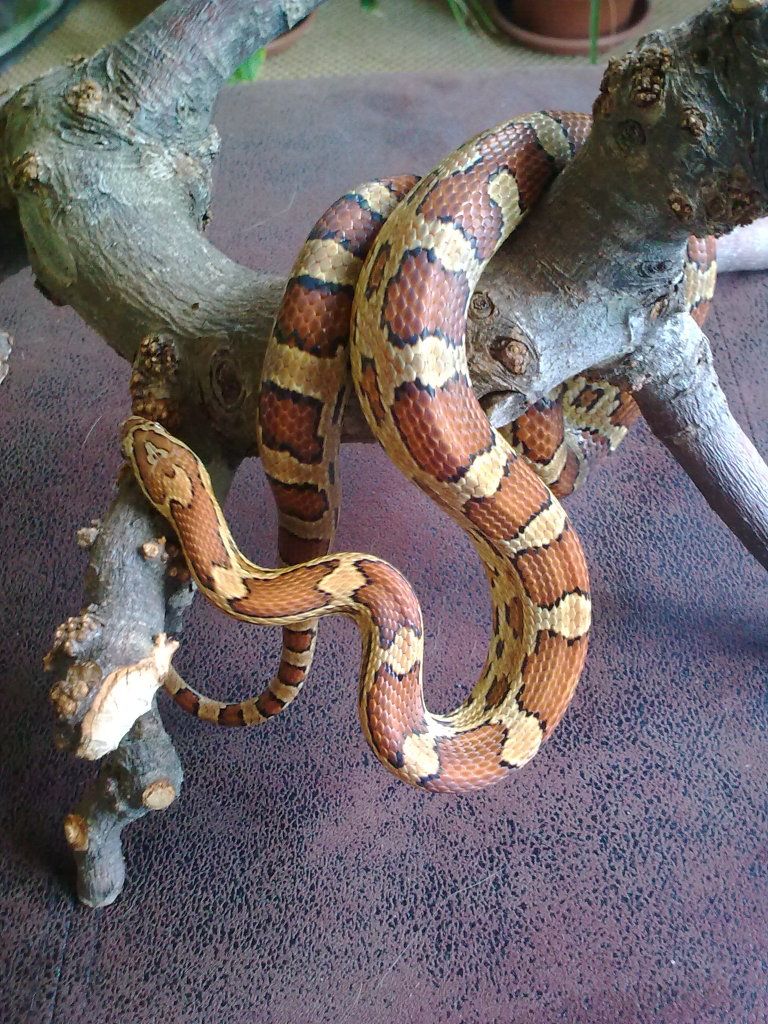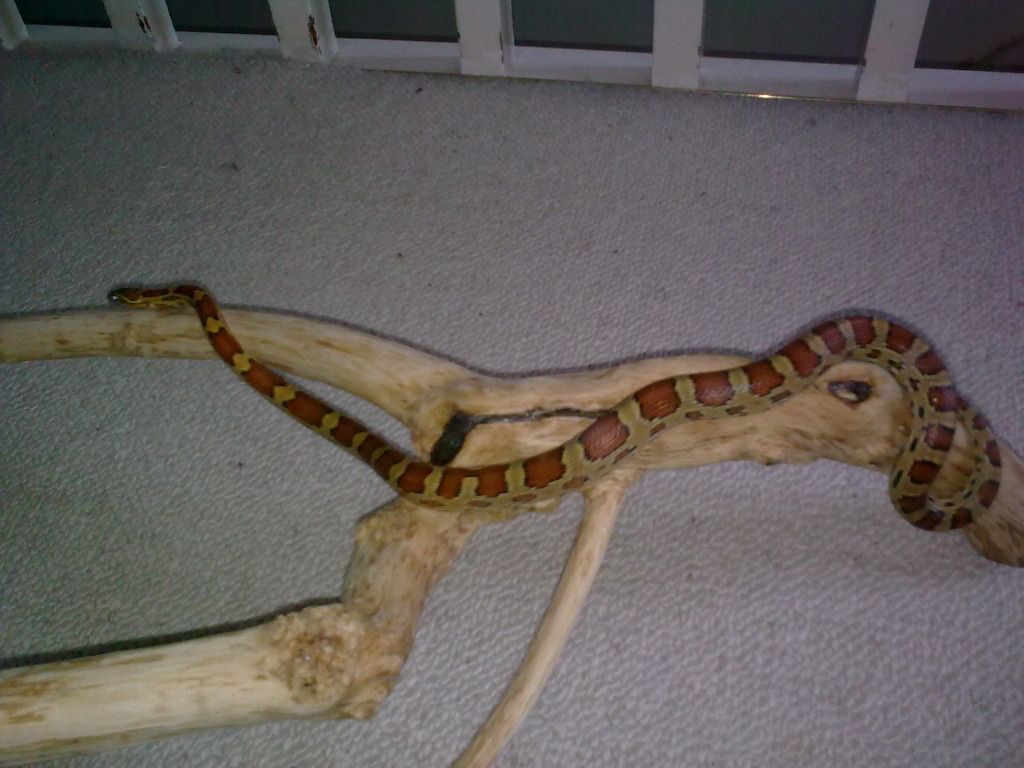| T O P I C R E V I E W |
| Isoldael |
Posted - 26/07/2012 : 22:48:34
So... on the topic of being able to guess a corn snakes hets from certain visual markers they have. Does anyone happen to know where to find a list of known het markers? If not, I might try to find as many as possible from any source I can to make a nice list somewhere, because I definitely think this is an interesting topic :) |
| 10 L A T E S T R E P L I E S (Newest First) |
| Razee |
Posted - 29/08/2012 : 09:17:42
Very interesting thread. I always wondered about my Bazilisek. He's a normal, bought from a garden centre who gets the snakes from dealers - so no history or breeding info.
He looked very different from the other hatchlings and the reptile guy there thought he might be het caramel as he had so much yellow on him already:

this is him as bought
since then his saddles are browner with every shed, background is dirty, strawy yellow:

and another couple:

 |
| Isoldael |
Posted - 28/08/2012 : 23:11:09
Visible in what way? I'd really like to make some kind of guide (preferrably with pictures) so people can get an idea of what to breed their snakes with to test for hets :)
It's a shame that I don't have any special het snakes at home, or I'd try to document everything about them to see if there are any possible indicators (pattern on the bottom of the tail, temperament, tongue colour, whatever I could think of). I just think it would be really cool to know such indicators, even if they are never 100% accurate :D |
| Dancross0 |
Posted - 28/08/2012 : 22:13:27
Het motley and het stripe are visible in the same animal, as is het amel and het ultra in the same animal... |
| eeji |
Posted - 08/08/2012 : 20:32:06
WHAT? SPEAK UP!!!!!! |
| scorpyshake |
Posted - 08/08/2012 : 11:37:01
quote:
Originally posted by cobweb251
I'm not deaf!!!!!! Lol
Haha, that's what I will tell my family now, when they going on about me not being able to hear them  although my dad had selective hearing :) although my dad had selective hearing :) |
| cobweb251 |
Posted - 28/07/2012 : 14:08:46
I'm not deaf!!!!!! Lol |
| Isoldael |
Posted - 28/07/2012 : 12:58:44
The thing with het markers is - the visual difference is NOT caused by the het gene itself (like you said, that would make it codominant). It's caused by a different gene, that is likely to be paired with the het gene.
An example - animals with blue eyes are more likely to have a genetic defect that makes them deaf. Of course, the blue eye gene itself is not related in any way to being deaf, but apparently animals with blue eyes are more likely to have the "deaf" gene as well.
This means that it's genetically very much possible that het markers exist. The only problem is finding them - and even if you do, they are never 100% accurate. Not all blue-eyed animals are deaf, and not all deaf animals are blue-eyed. It's just an indication. |
| eeji |
Posted - 27/07/2012 : 21:00:54
'het markers' as such don't exist. If a het alters the appearance (different from normal and different from homozygous) then its a codominant morph. Take a look at all the codom royal python morphs that look almost identical to normal.
I personally don't buy into the 'het caramel makes a corn more yellow' idea, there is no evidence of this in any of my het caramels and other peoples so is not reliable enough.
The 'het diffused clear line down the belly marker' actually has nothing to do with the diffused gene, that is the masque gene that is responsible. Masque has been isolated from diffused and identified as totally seperate and is a dominant morph which explains how the effects can be seen as a het. |
| Isoldael |
Posted - 26/07/2012 : 23:48:24
I'm interested in finding more possible het markers as well, using tongue colour for instance. I have no idea if that has any influence, but I'd love to know :) |
| gmac |
Posted - 26/07/2012 : 23:14:04
theres really only a few you can tell from markers, het diffused and caramel are a couple off the top of my head
|

